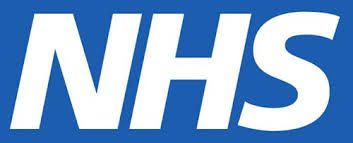Meet Dr Richard Hixson, Consultant in Anaesthesia and Critical Care Medicine at Country Durham and Darlington NHS Foundation Trust and Designer of CPDmatch. CPDmatch proactively matches the professional development needs of all healthcare professionals with relevant, accessible and affordable educational opportunities. Read what Richard has to say about support from AHSNs, taking the first step and being the Booking.com of healthcare education.
Tell us about your innovation – what and why?
The best way to describe CPDmatch is as the Booking.com of healthcare education. It’s an aggregator site where you can find what you want, when you want and where you want it.
For health education, people tend to either try and find what they need via Google, which I think is an impossible task, or they go to the same provider or conference every year.
Back in 2017 I decided we needed a ‘go to’ website to bring healthcare education opportunities together in one place. I began some due diligence such as surveying healthcare professionals. What I found is that 70% of people admitted to missing critical educational opportunities because they weren’t aware of them, 30% were panic booking prior to their appraisal, and over 90% wanted to undertake more education closer to home for either work, family, or environmental reasons. This helped to convince me that CPDmatch was needed.
What was the ‘lightbulb’ moment?
The lightbulb moment for me was when I realised that four colleagues in my department were flying long distances to America for education. I undertook another survey looking at the distances being travelled by healthcare professionals and realised most could either fulfil their educational needs within the region or virtually. At the same time, in our trust we were starting to talk more about sustainability, green plans, and the carbon cost of acquiring education, so I felt that this idea could be an easy but meaningful win.
The second lightbulb moment was with the rise of virtual education during the coronavirus pandemic; suddenly continents and time zones were no longer a barrier. By setting up this central repository, we realised that people in lower resourced countries could find the same virtual education opportunities via CPDmatch as anyone else.
Which AHSNs are you/have you been supported by?
I have been supported by multiple AHSNs. AHSN NENC has given me great networking opportunities such as attendance at the national HETT (Health Excellence Through Technology) event which included an exhibition pod and a speaking slot on the AHSN Network stand. They also helped me set up a mentorship with a business leader from the northeast, who is helping me with my business model and the commercialisation of the platform.
The Innovation Agency NWC helped me with introductions to universities, Yorkshire & Humber AHSN introduced me to contacts at the Leeds Teaching Hospitals NHS Trust and Integrated Care Systems (ICS) in the region, and UCL Partners has agreed to begin using CPDmatch and has made introductions for us across their region as well.
What’s been your toughest obstacle to date?
Taking the first step, without a doubt. When you have costed your idea and you know it’s going to be expensive, taking that first step is very difficult. For me this was where reaching out was essential, both to my local AHSN and to the Regional Technology Centre. I needed validation from people who are specialists in health innovation to sense check whether it was a good idea or not!
Also marketing to healthcare professionals is not easy. I really need support with networking and marketing in each region, so I have been talking to each of the AHSNs to support me with this.
What are your hopes for the future?
The win for me this year would be to get CPDmatch adopted by all 42 Integrated Care Systems in England, followed by their equivalents in the rest of the UK. I also need to work with them to access their metrics so that I can show we have reduced the carbon footprint of travel related to education.
What’s the best part of your job?
It’s when I see education providers advertise something spontaneously, without prompting. Then when I see it generating traffic through to their website, I know it’s working – that for me is a key step in reaching the overall goals of CPDmatch. Seeing it work without me having to do anything shows that we’ve developed a platform that’s fit for purpose.
Three pieces of advice for budding innovators?
- Reach out to find what is available locally, find someone to pitch to and get some feedback from your pitch.
- Write down your destination. What is it that you hope to achieve by delivering your innovation? What’s in your heart? Other people will see through it if you’re not clear on that yourself.
- Map out from where you are now to where you want to be. Break it down into manageable chunks. Also map out your key stakeholders, prioritise them, work out how you are going to reach them and what you are going to say.

Grace Gimson is the founder and CEO of Holly Health, a digital platform dedicated to transforming healthcare through preventive and person-centered digital health coaching. The platform aims to support individuals struggling with mental or physical health. Grace is a generalist with a background in operations, business leadership, and scaling tech startups such as Deliveroo. [...]

HN (Health Navigator) is an AI-powered health innovation that enables preventative care through predictive analytics. Founded in Sweden by Dr Joachim Werr, a former A&E consultant, HN is now supporting healthcare systems across the UK to identify high-risk patients before they reach crisis point. Joachim shares the journey behind HN and the transformative impact of [...]

The government has set out three shifts it wants to see happen: treatment to prevention, hospital to community, analogue to digital. HealthTech has a crucial role in supporting the delivery of all three. But using technology to help deliver these changes requires procuring the technology, and when all the noise is about there being no [...]









